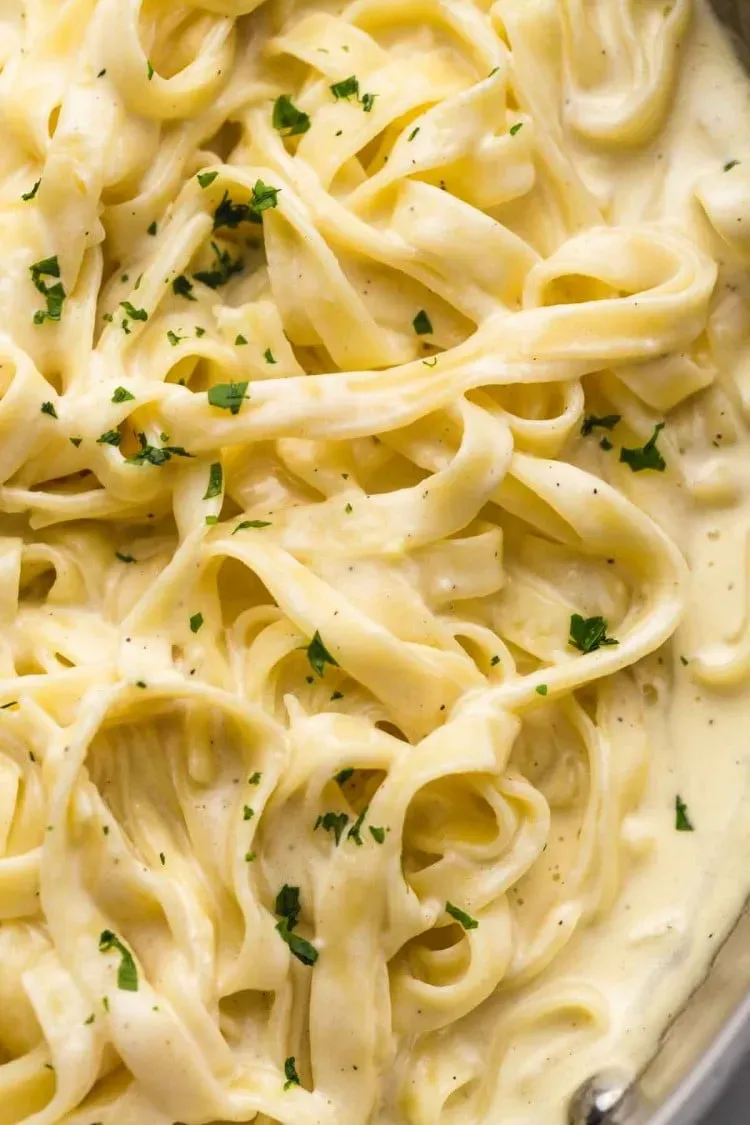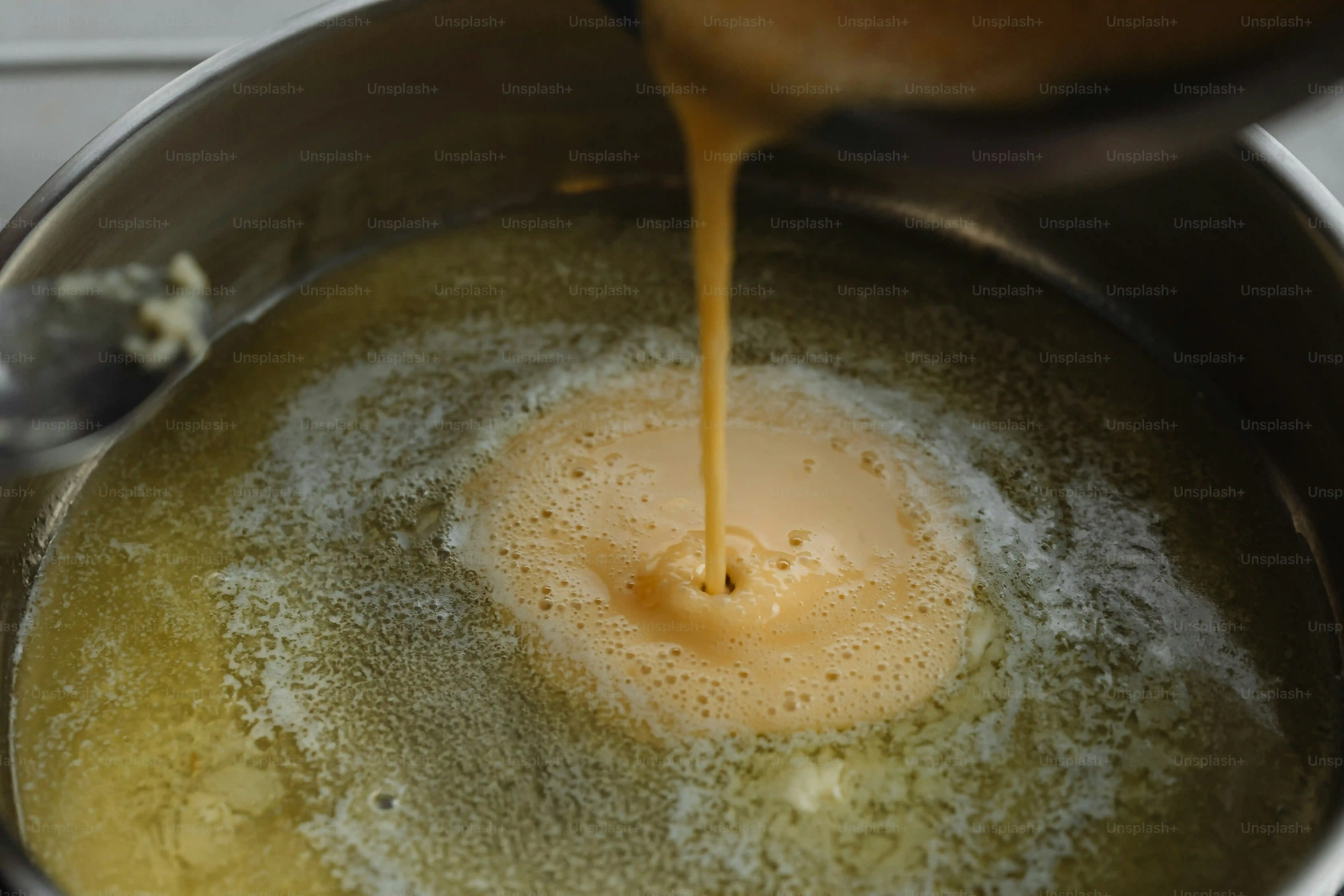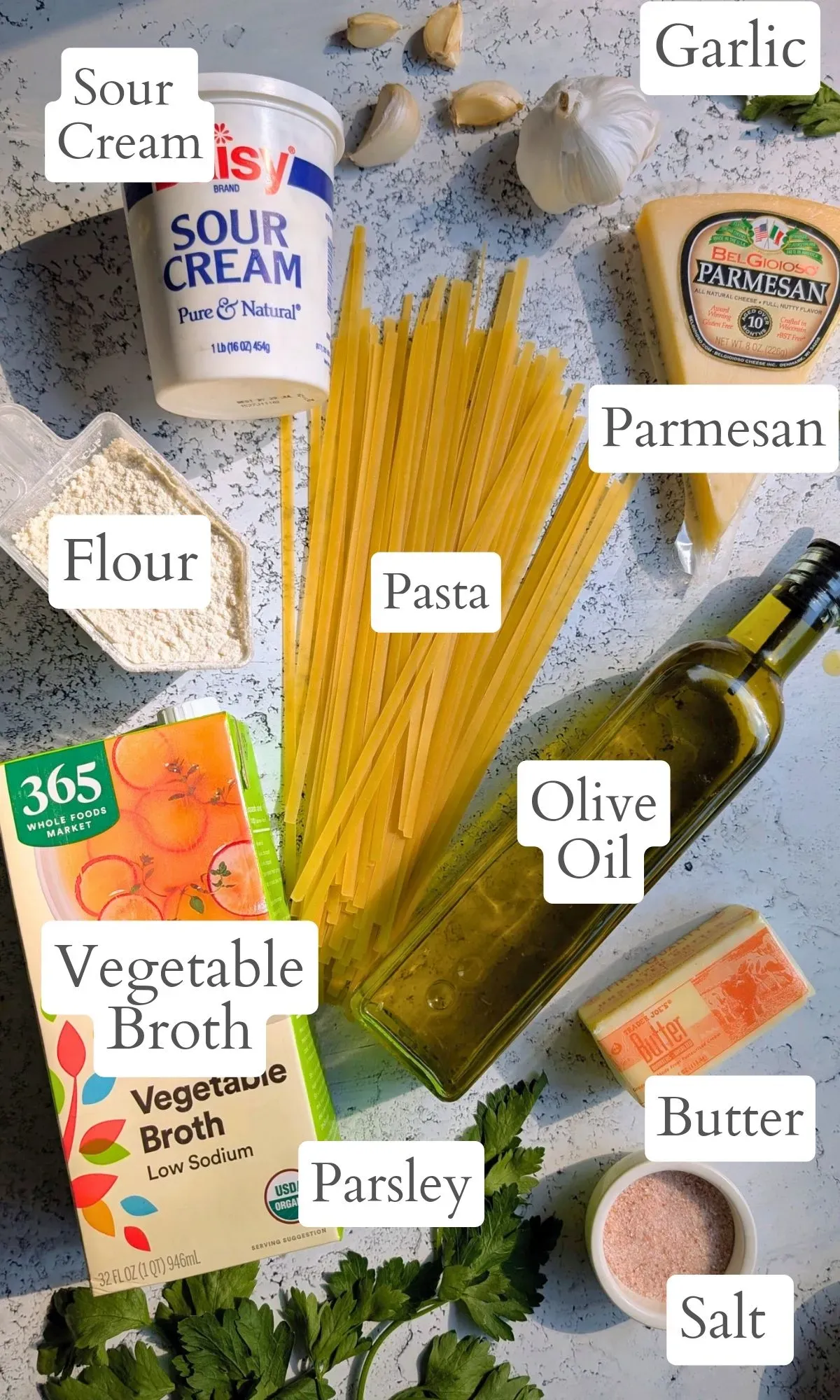Table of Contents
Picture this: You're craving that rich, creamy pasta dish, the kind that coats every single noodle in velvety goodness. Usually, that means reaching for heavy cream, right? But maybe you're out, or maybe you're just looking for a different trick up your sleeve. What if I told you there's a simple swap that delivers serious creaminess without a drop of that typical dairy staple? Enter sour cream, the unsung hero of shortcut sauces.
Why Use Sour Cream in Alfredo Sauce?

Why Use Sour Cream in Alfredo Sauce?
Alright, so you're wondering about this sour cream thing in Alfredo, huh? It might sound a little unconventional at first, but trust me, there's a solid reason behind it. The biggest win? Creaminess, pure and simple. Sour cream has a fantastic fat content that melts down beautifully when heated gently, giving you that luxurious, clinging sauce texture you expect from Alfredo. But it does something heavy cream doesn't quite manage on its own: it adds a subtle, bright tang. That touch of acidity cuts through the richness of the butter and Parmesan, balancing the flavors so the sauce doesn't feel quite as heavy or one-dimensional. Plus, let's be real, sometimes you just have sour cream in the fridge and not heavy cream. It’s a pantry staple for many, making this a super convenient swap when that pasta craving hits hard and fast.
Gathering Ingredients for Sour Cream Alfredo

Gathering Ingredients for Sour Cream Alfredo
The Creamy Core: Sour Cream, Butter, and Cheese
Alright, let's talk about the good stuff, the foundation of this slightly rebellious Alfredo. First up, obviously, is the sour cream. Go for full-fat here. Seriously, this is not the time for low-fat options; you want that richness to make the sauce work. Next, butter. Use good quality butter. It makes a difference in flavor, melting into that essential base. Finally, the cheese. Parmigiano-Reggiano is the gold standard for a reason. It melts beautifully and has that nutty, salty depth. Pre-shredded stuff often has anti-caking agents that can make your sauce grainy. Grate it yourself, please. It takes an extra minute and saves you from a potentially sad sauce situation.
Aromatics and Seasoning: Garlic is Key
You can't have Alfredo without garlic, right? A clove or two, finely minced, adds that essential pungent kick. Don't burn it though; sad, bitter garlic ruins everything. Just a quick sauté to get it fragrant. Then, simple salt and pepper. You'll add salt to the pasta water anyway, but season the sauce itself to taste. Remember, the cheese is salty, so go easy at first and adjust as you go. Some folks like a pinch of nutmeg, which is classic in many cream sauces. It's subtle but adds a little something extra. Totally optional, but worth considering.
- Full-fat sour cream
- Good quality butter
- Freshly grated Parmigiano-Reggiano cheese
- Fresh garlic cloves
- Salt and black pepper
- Your choice of pasta (fettuccine is traditional, but hey, your kitchen, your rules)
Pasta and the Magic Liquid
While technically not *in* the sauce itself during the initial cooking, the pasta and its cooking water are absolutely critical. Fettuccine is classic for Alfredo because the flat shape holds the sauce well. Cook your pasta in generously salted water. This is your first chance to season the dish. And listen closely: **DO NOT DRAIN ALL THE PASTA WATER.** That starchy, salty water is liquid gold. You'll use it to help emulsify the sauce, thinning it out to the perfect consistency and helping it cling to the noodles. Save at least a cup before you drain the pasta.
StepbyStep: How to Make Alfredo Sauce with Sour Cream

StepbyStep: How to Make Alfredo Sauce with Sour Cream
Start with the Base: Butter and Garlic
Alright, let's get this show on the road. Grab a skillet or a wide pan – something big enough to eventually hold all the pasta. Melt your good quality butter over medium-low heat. Don't crank the heat; you want to melt it gently, not brown it immediately. Once it's melted and maybe just starting to foam a little, toss in your finely minced garlic. Cook it for about 30-60 seconds, just until you can really smell it. You're looking for fragrant, not brown or crispy. Burnt garlic is a culinary crime.
This step sets the stage for the whole sauce. That buttery, garlicky aroma is the promise of good things to come. Keep the heat low and keep an eye on it. Multitasking is great, but not if it means scorching your garlic. This is where the foundation of your how to make alfredo sauce with sour cream journey begins.
Bring in the Cream and Cheese
Now for the magic. Take the pan off the heat *briefly*. This prevents the sour cream from curdling when it hits the hot butter. Spoon in your full-fat sour cream. Stir it gently with a whisk or a spoon until it's smooth and fully incorporated with the melted butter. It should look homogenous, like a creamy base. Then, return the pan to very low heat. Add your freshly grated Parmigiano-Reggiano cheese. Stir constantly. The cheese will start to melt and emulsify into the sour cream and butter mixture.
This is where the texture develops. Keep stirring until the cheese is completely melted and the sauce is smooth and glossy. If it seems too thick, or a little clumpy, here's where that reserved pasta water comes in. Add it a splash at a time, stirring continuously, until you reach your desired consistency. It should be thick enough to coat the back of a spoon but pourable enough to mix easily with pasta. Season with salt and pepper to taste, remembering the cheese is salty. This is the core of learning how to make alfredo sauce with sour cream without the usual heavy cream.
- Melt butter over medium-low heat.
- Add minced garlic; cook 30-60 seconds until fragrant.
- Remove pan from heat briefly.
- Stir in full-fat sour cream until smooth.
- Return to very low heat.
- Add grated Parmigiano-Reggiano; stir until melted and smooth.
- Add reserved pasta water, splash by splash, to reach desired consistency.
- Season with salt and pepper.
Tips and Variations for Your Sour Cream Alfredo

Tips and Variations for Your Sour Cream Alfredo
Tweaking the Texture and Flavor
so you've nailed the basic how to make alfredo sauce with sour cream. But maybe you want it a little thinner, or perhaps richer? The easiest way to adjust the consistency is with that saved pasta water. Add it slowly, a tablespoon at a time, stirring constantly, until it's exactly how you like it. Don't dump it all in at once unless you want soup. If, by some miracle, you added too much water, you can try adding a little more grated cheese off the heat, stirring until it melts and thickens things up. For more depth, consider adding a tiny pinch of white pepper or a grating of fresh nutmeg, which is a classic Italian trick for cream sauces that adds a subtle warmth without being overwhelming. Taste as you go – seriously, this isn't a bake sale, you're allowed to sample.
Adding Extras: More Than Just Pasta
This sour cream Alfredo is a fantastic base, but let's be honest, sometimes pasta needs friends. Cooked chicken or shrimp are obvious additions, stirring them in at the end to coat. Sautéed mushrooms add an earthy depth, or wilted spinach can sneak in some greens without much fuss. Roasted broccoli or asparagus tossed in can turn this simple dish into a more complete meal. Just make sure whatever you add is already cooked before it joins the sauce party, unless it's something like spinach that wilts instantly. Think about textures too – something with a little bite can be a nice contrast to the smooth sauce. This flexibility is another reason why knowing how to make alfredo sauce with sour cream is pretty handy.
- Add cooked protein: Chicken, shrimp, or even leftover steak slices.
- Stir in sautéed vegetables: Mushrooms, onions, bell peppers.
- Wilt in greens: Fresh spinach or arugula.
- Add roasted vegetables: Broccoli, asparagus, or cherry tomatoes.
- Spice it up: A pinch of red pepper flakes for a little heat.
Storing and Reheating Sour Cream Alfredo Sauce

Storing and Reheating Sour Cream Alfredo Sauce
So, you've whipped up this fantastic sour cream Alfredo, devoured a plate (or two), and now you have leftovers. Great! You can definitely save this magic. Just let it cool down completely before you transfer it to an airtight container and stick it in the fridge. It'll stay good for about 3 days. Now, here's the crucial part: reheating. Alfredo sauce, especially one made without heavy cream, can be a little finicky. Zapping it in the microwave often leads to separation – you get oily sauce and sad, clumped pasta. The best way? Gently reheat it on the stovetop over low heat. Add a splash of milk, cream, or even a bit more reserved pasta water (if you saved extra) while you stir it. This helps bring it back to that smooth, creamy consistency. Don't boil it; just warm it through slowly, stirring often.
Your New Go-To Alfredo Trick
So there you have it. Making alfredo sauce with sour cream isn't culinary heresy; it's a practical, tasty alternative when you're short on heavy cream or just want a slightly different profile. It delivers on the creamy texture you expect, maybe with a touch more personality thanks to that subtle tang. It's quicker, uses common ingredients, and gets you to pasta paradise without the usual fuss. Give it a shot next time the alfredo craving hits – you might just find your new favorite way to make this classic.